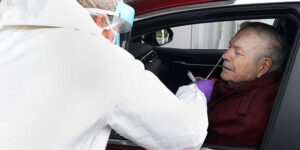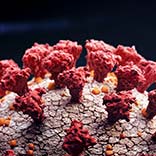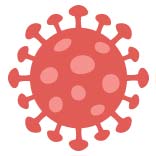Demystifying Coronavirus Tests
Coronavirus tests are making headlines, but confusion remains. Different tests detect different things and have different uses. We walk through the two main types of tests related to SARS-CoV-2, the virus that causes COVID-19: what each test detects, how it detects it and what the test can tell us about current and prior infection.
Fred Hutch News – https://www.fredhutch.org/diseases/coronavirus/serology-testing
Testing for Infection: PCR Nasal Swab Test
This nasal swab test detects bits of the virus itself and can tell you if you’re currently infected. Swabs are used to collect samples from the mucus membranes in the nose and throat where the virus may be growing or have been coughed up from the lungs. The assay used to detect the virus’ genetic material, RNA, is called the PCR assay.




Nasal Swab Test
This test is an important tool to determine who should quarantine to help stop the coronavirus’ spread. What it doesn’t tell us: don’t show whether that RNA is part of an infectious virus particle. That’s why it’s hard to know whether studies that show SARS-CoV-2 can be found in fecal samples are really evidence that it can also be transmitted that way.

A patient is tested for coronavirus in late April, 2020. Photo by Al Bello / Getty Images
Testing for Exposure: Blood, Antibody or Serology Test
If you’ve gotten a blood test, antibody test, or serology test, you’ve been tested for an immune response to SARS-CoV-2. This type of test uses a blood sample to detect specific immune proteins known as antibodies. These are found in the serum, the clear liquid that remains when clotting proteins and cells have been removed from blood. Our bodies make antibodies in response to infections, including coronaviruses. The ELISA assay is the most common method used to detect these antibodies.








Blood Test
While we produce antibodies to coronavirus during infection, antibodies to viruses also linger long after the infection has passed, which makes serology tests poor indicators of active infection. Additionally, most serology tests are designed detect a type of antibody that arises later during an infection, making them better at showing prior exposure.
What these type of antibody tests cannot do is show whether someone is protected from reinfection by SARS-CoV-2. A different type of test, which measures how well a person’s antibodies block infection by the novel coronavirus, gets closer to showing whether they’re protected or not.
And while the ELISA is a major type of serology test, it’s not the only one available. Several kinds of tests, including those that use technology similar to pregnancy tests, have hit the market, though not all give reliable results.
How Scientists Use These Tests

Tests for both active infection and prior exposure are being used as health officials and scientists grapple with the scope of the SARS-CoV-2 epidemic. Both will help us understand how far the virus has spread, who it affects and how much. The serology test is also used in studies looking at the potential therapeutic use of antibodies from those who have had COVID-19 and recovered.
The serology test will also help them determine whether most people mount a detectable immune response the novel coronavirus, as well as how long it lasts, key information needed to develop a protective vaccine.
But as the U.S. moves to reopen the economy and companies speed vaccine development, other tests must also come into play. A critical piece of information, which neither the swab test nor the basic serology test provide, is how well an immune response to SARS-CoV-2 protects against reinfection. Not all antibodies will neutralize, or block infection, by the novel coronavirus. Other tests that measure neutralization, like one being used by Moderna in their vaccine trial, will be to critical understanding whether a vaccine looks promising. They will also give us a better sense of how much we can rely on herd immunity to protect against later waves coronavirus infection. Currently there are no tests for neutralizing immunity available outside of a research setting.
Enrolling Participants: COVID-19 Clinical Trials

CovidWatch
This Fred Hutch research project is enrolling volunteers who are at high risk of being exposed to the novel coronavirus including health care workers, employees of long-term care facilities and hospitals, first responders, grocery store employees and bus drivers.

COVID-19 and Cancer Consortium
More than 30 U.S. cancer centers and organizations, including Fred Hutch and its clinical care partner Seattle Cancer Care Alliance, have come together to collect and disseminate data to better understand the scope and severity of COVID-19 in patients with cancer.

Seattle COVID Cohort
The Seattle Vaccine Trials Unit, part of Fred Hutchinson Cancer Research Center, is looking for people who are at risk for COVID or have tested positive for COVID-19 to take part in a research study. Individuals are needed to help us learn more about how the virus affects the immune system.